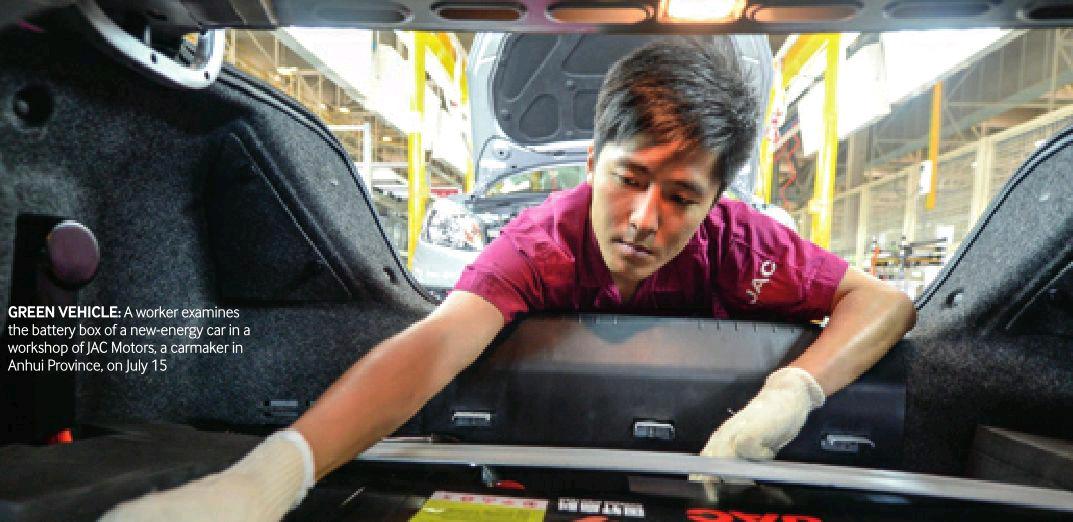Green Drive
2014-08-27ByDengYaqing
By+Deng+Yaqing
As the atmosphere is increasingly affected by the burning of fossil fuels, the use of new-energy cars, theoretically including electric vehicles, plug-in hybrid electric vehicles and fuel cell vehicles, represents an inexorable trend for the automobile industry.
Demonstrating a greater resolve to boost the fledgling new-energy car sector, Chinese authorities have released a fresh set of policies to stimulate the popularization and application of new-energy cars, aiming to push forward the construction of fast-charging facilities, promote their use in the public service sector and break up local protectionism.
On July 30, the National Development and Reform Commission (NDRC), unveiled a plan to offer preferential electricity charges for the electric-car sector. The announcement came 10 days after the State Council, Chinas cabinet, issued guidelines for promoting new-energy vehicles.
Discounted power prices will be offered to operators of public charging facilities before 2020, in addition to operational subsidies and free business sites, said an NDRC statement.
Earlier on July 9, the State Council decided to exempt new-energy vehicle buyers from the 10-percent purchase tax starting from September 1 to the end of 2017.
Miao Wei, Minister of Industry and Information Technology, described the recently released supportive policies as highly target-specific and practical, believing they will revitalize the new-energy vehicle market and accelerate its development.
Aside from that, the Central Government allegedly will publish its fiscal support for the promotion of new-energy cars from 2016 to 2020 at the end of this year, which implies that financial subsidies will be continuously available after the current subsidies expire in 2015.
The State Council released the Plan for the Development of the Energy-Saving and New-Energy Automobile Industry (2012-20) in July 2012. It sets a target of producing and selling 500,000 pure electric and plug-in hybrid vehicles by 2015, and 5 million such vehicles by 2020.
According to statistics from the China Association of Automobile Manufacturers(CAAM), the output and sales of new-energy cars in China respectively reached 20,692 and 20,477 units in the first six months of 2014, up 230 percent and 220 percent year on year. The output and sales of electric vehicles stood at 12,185 and 11,777 units, and that of plug-in hybrid electric vehicles registered 8,507 and 8,700 units.endprint
